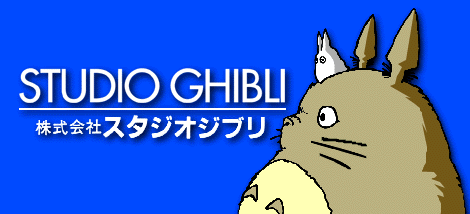1984-Nausicaa Of the Valley of the Wind
Technically released before the foundation of the studio, you will see it included in DVD collections of the studio's works as it is essentially what led to the two directors coming together to establish the animation behemoth.Nausicaa was directed by Hayao Miyazaki and originated from a manga (comic) series of the same name, that the director had written between February 1982 and March 1984. The film is set 1,000 years in the future. Most of the world was destroyed in the "Seven Days of Fire" that ravaged the earth and left only pockets of humans left in scattered lands across the world. One such, group live in the Valley of the Wind bordered by the Toxic Jungle, residue of the horrific enviromental disaster that ravaged the earth's ecosystem.
The film deals with humanities frayed and often destructive relationship with nature. In this sense it is typical of much of Miyazaki's output. The main character is often heavily involved with the world of nature (Princess Mononoke, Ponyo) as Nausicaa is here and faces a struggle from those who try to abuse it.
Nausicaa was released in the 1980's in North America as Warriors of the Wind. Most of the characters were renamed, 30 minutes of footage was removed and the voice actors weren't even informed of the film's content. Miyazaki has asked that this version by forgotten about and since its release the studio has demanded a no cuts policy for international distribution to unsure events like this are not repeated. Disney released a re-dubbed version in 2005, more faithful to the original.
Music from Nausicaa was used in the 1994 Winter Olympics by Chen Lu who won Bronze. The film was also the recipient of the 1984 Animage Anime Grand Prix. There are also two Japanese only videogames based on the film, the only two videogames based on a Miyazaki property.
Nausicaa is an amazing achievement of both fantasy storytelling and artistic achievement, with a message that is universally salient and perhaps more relevant and powerful now than when it was written. One of the brightest gems in the Ghibli crown.
1986- Laputa: Castle in the Sky
Released in Japan in 1986, this is the first film released under the Studio Ghibli moniker and it is also the creation of Hayao Miyazaki. The name Laputa comes from Johnathan Swift's Gulliver's Travels which itself featured a floating castle of the same name.The plot is probably the most traditional of all Miyazaki's films. The Sky Pirates attempt to kidnap Sheeta the holder of an ancient star pendant. The burden to rescue her falls on Pazu, a young man of similar age too Sheeta. Ill let you fill in the rest.
In the eighties Miyazaki spent a lot of time in London with coal mining strikers. It appears to many that this influence can be seen in the setting in Laputa which is far more industrialised than Miyazaki's other films. Also unlike Miyazaki's other works the central character is male in Pazu. Usually in Miyazaki works it is a female lead who experiences powerful growth through adversity. However Sheeta is relegated to damsel in distress status here.
Castle in the Sky is Miyazaki's second great epic piece of fantasy. It is also a brilliant display of incredible animation (that admittedly hasn't transferred as well as some of the other early Ghibli films) and another masterful score composed by Joe Hisaishi who works on all Miyazakis films. The film has a pretty lengthy run-time but the pace is a lot quicker than much of the studio's output and it probably caters to the stereotypical anime fan more than any other.
Laputa was renamed for international distribution in many territories as it can be translated as whore or bitch in Spanish and is similar to pute in French. Also in Disney's dub, as has been done with other Ghibli movies, more crowd noise was added to the background in various scenes and Hisaishi was asked to lengthen the score and support an orchestra as this was expected of Western audiences. It too has one the Animage Anime Grand Prix a testament to its quality (1986).
Check back soon for part two of my Studio Ghibli series. If you found it interesting you may want to take a look at these other links to my opinions on some other great cinematic treats.
Gay Cinema
Me and World Cinema

I happen to love the Disney dubs of these films, particularly the second film, for Joe Hisaishi's rescore and for the performances of the supporting characters.
ReplyDeleteYes I do also think that Disney has done a fantastic job with the Ghibli catalogue in general. I think it is because of the close relationship between Miyazaki and John Lassetter. They really are some of the best dubs of anime to be found.
ReplyDeleteOh and thanks very much for the comment. :)
ReplyDelete